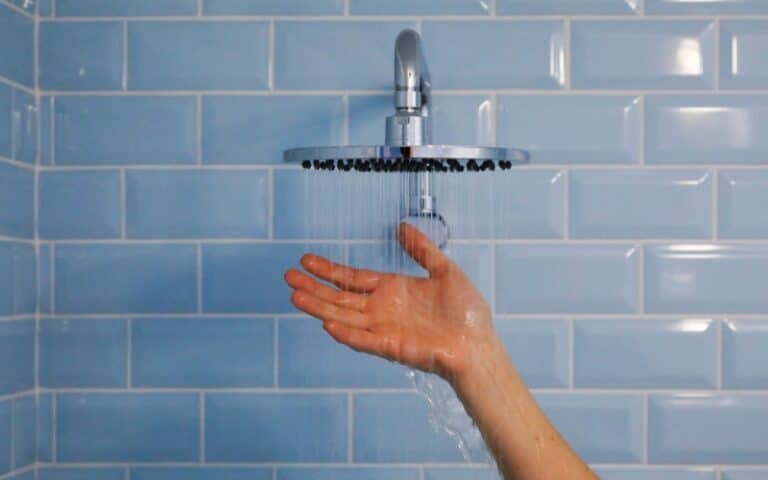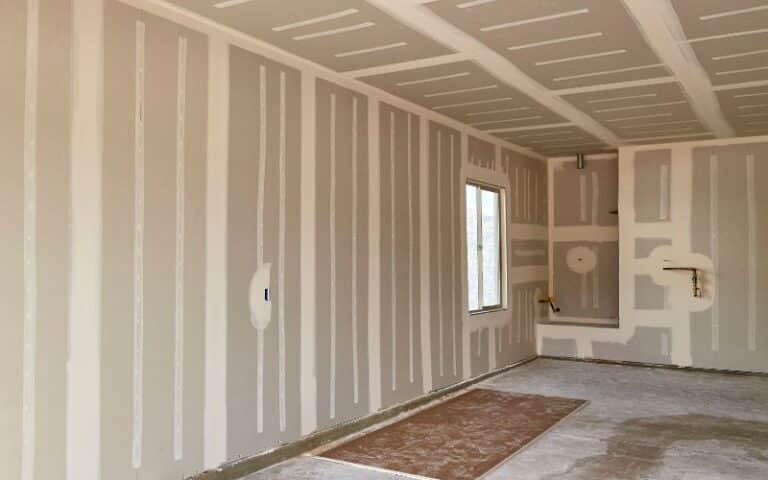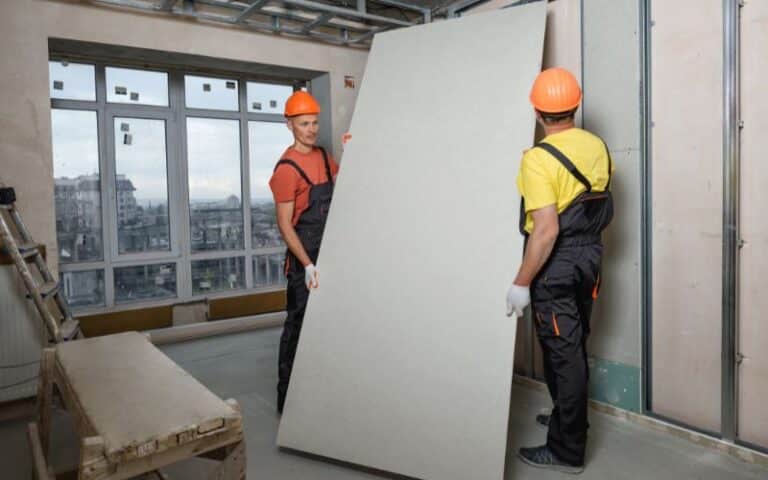Mastic is a popular adhesive used in various construction projects. Regarding drywall installation, mastic can be a handy tool in your arsenal.
However, the use of mastic on drywall is a topic of debate among professionals in the construction industry. Some swear by its effectiveness, while others caution against its use.
In this article, we’ll look closer at mastic on drywall and examine its benefits, potential drawbacks, and when it’s appropriate to use.
Using mastic on drywall can be problematic as it can cause the drywall to buckle and warp over time. Drywall is a fragile material that can easily absorb moisture, causing it to expand and contract. Mastic, a water-based adhesive, can seep into the drywall and cause it to swell, leading to warping and buckling.
This article will explore the ins and outs of mastic on drywall, including what type to use.
So if you’re planning a tiling project and considering mastic as your adhesive, read on for everything you need to know.
Ready for a Drywall Quiz?
Can You Use Mastic on Drywall?

You can use mastic on drywall, but it is not the best adhesive for all applications. Mastic is often ideal for tiling and bonding other materials to drywall.
However, other adhesives may be more suitable depending on the specific application. Choosing the right adhesive for the job ensures a strong and durable bond.
Mastic is a type of adhesive ideal for construction and home improvement projects. It is typically made of polymers, resins, and fillers and is often used to bond tiles, wood, and drywall.
The answer to using mastic on drywall is generally yes, but there are some important considerations to remember.
First, it’s important to note that there are different types of mastic, and not all of them are suitable for use on drywall.
Some types of mastic are explicitly designed for use with tiles or other floorings, while others are better suited for use with drywall.
When selecting a mastic for use on drywall, it’s important to choose one specifically for this purpose.
Look for a mastic labeled as “drywall adhesive” or “drywall mastic” to ensure you use the correct product.
Another important consideration when using mastic on drywall is to ensure that the surface of the drywall is properly ready.
This process typically involves cleaning the surface to remove debris interfering with the mastic and drywall bond.
It is also necessary to sand the surface of the drywall to create a slightly rough texture that will help the mastic adhere more effectively.
Once the surface of the drywall is ready, the mastic can be applied using a trowel or a putty knife.
Finally, giving the mastic sufficient time to dry and cure is vital before further work on the drywall.
How Do You Use Mastic on Drywall?
Mastic is a versatile adhesive used on various surfaces, including drywall. To use mastic on drywall, prepare the surface by cleaning and priming it.
Next, apply the mastic using a trowel or notched trowel, spreading it evenly over the drywall in small sections.
Then, press the tiles firmly into the mastic, using spacers to maintain consistent spacing.
Here’s a step-by-step guide on how to use mastic on drywall:
#1. Prepare the Surface
Ensure the drywall’s surface is clean and free of dust and debris. Use a dry cloth or vacuum cleaner to remove any loose particles.
#2. Mix the Mastic
Follow the manufacturer’s instructions on how to mix the mastic. Mixing it thoroughly to ensure it will bond properly is important.
#3. Apply the Mastic
Using a notched trowel, spread the mastic onto the drywall. The size of the trowel depends on the surface you are working on.
However, a 3/16-inch trowel is typically suitable for most applications. Make sure to apply an even coat, with enough mastic to cover the surface but not so much that it starts to drip.
#4. Install the Material
Once the mastic is applied, press the material to be installed firmly onto the drywall. Use a level to ensure it’s straight, and adjust it as necessary.
If installing tiles, use spacers to ensure even spacing between them.
#5. Allow the Mastic to Dry
Depending on the type of mastic you’re using, it may take 24 to 48 hours to cure fully. Avoid touching or disturbing the material while the mastic is drying.
Overall, using mastic on drywall is fairly straightforward, but following the manufacturer’s instructions and allowing ample drying time is essential to ensure a strong bond.
Should I Use Mastic Instead of Thinset on Drywall?
Whether to use mastic or thinset on drywall depends on the specific situation and the type of material you’re installing.
Mastic is an adhesive best suitable for smooth and non-porous surfaces, such as ceramic tiles, glass tiles, or stone tiles.
It is easy to apply and dries quickly, making it a popular choice for DIY projects.
Thinset is a cement-based adhesive that is more versatile and suitable for a wider range of surfaces, including drywall.
It is stronger and more durable than mastic, making it a better choice for heavy or large tiles.
However, when it comes to drywall, thinset is generally a better choice over mastic. The thinset is better because drywall is porous, and mastic may not bond securely to the surface.
In addition, thinset can better withstand the weight and pressure of heavy or large tiles, which can cause mastic to fail over time.
Ultimately, it’s essential to consider the specific circumstances and follow the manufacturer’s instructions for whichever adhesive you use.
If you need more clarification, consult a professional or expert to ensure you make the right choice for your project.
Here’s a table showing some differences between thinset and mastic for use on drywall.
| Criteria | Thinset | Mastic |
|---|---|---|
| Type of adhesive | Cementitious | Organic |
| Bond strength | Strong | Moderate |
| Suitable for | Large tiles or heavy stone | Small tiles or lightweight materials |
| Recommended for | Showers, floors, backsplashes, and countertops | Walls and backsplashes |
| Cost | More expensive | Less expensive |
| Durability | Durable and long-lasting | Less durable and may break down over time |
What Will Mastic Adhere to?
Mastic will adhere to various surfaces, including wood, metal, glass, plastic, and ceramic.
However, selecting the appropriate mastic type for the specific surface and application is vital to ensure proper adhesion.
Here are some materials that mastic can adhere to:
#1. Wood
Mastic adhesive can bond to wood surfaces, including plywood, particleboard, and hardwood.
However, before applying the adhesive, the wood surface should be clean and free from dust and debris.
#2. Metal
Mastic can bond to different types of metals, such as aluminum, steel, and copper. Before applying the adhesive, the metal surface should be clean and free from rust, corrosion, or oil.
#3. Plastic
Mastic can bond to various plastic materials, including PVC, polycarbonate, and acrylic. However, mastic may not be suitable for all types of plastic.
Therefore, testing the adhesive on a small area is important before using it for larger applications.
#4. Ceramics
Mastic can bond to ceramic surfaces, including tiles, porcelain, and terracotta.
However, ensuring the ceramic surface is clean and free from grease or oil before applying the adhesive is crucial.
#5. Concrete
Mastic can bond to concrete surfaces, including both smooth and rough concrete surfaces.
However, ensure the concrete surface is clean and free from debris or loose material before applying the adhesive.
#6. Brick and Stone
Mastic can bond to brick and stone surfaces, including natural and manufactured stone.
However, ensure the brick or stone surface is clean and dust-free before applying the adhesive.
What Adhesive Is Recommended for Use on Drywall?
A joint compound or drywall mud is the recommended adhesive for use on drywall.
When it comes to drywall, there are several types of adhesives for different purposes, such as hanging drywall or installing tiles.
Here are some of the most commonly used adhesives for drywall:
#1. Drywall Joint Compound
A joint compound, also known as drywall mud, is a versatile adhesive that you can use for finishing drywall seams and repairing small holes or cracks.
You can typically apply a joint compound with a trowel or a putty knife. However, it requires some skill to achieve a smooth and even finish.
#2. Construction Adhesive
Construction adhesive, or panel adhesive, is a strong adhesive that you can use to attach drywall panels to wood or metal framing.
You can apply it with a caulking gun, and it provides a strong bond that can withstand weight and pressure.
#3. Tile Adhesive
Tile adhesive is a strong adhesive to install tiles on drywall surfaces.
You can typically apply the adhesive with a trowel or a notched trowel, providing a strong bond that can withstand moisture and temperature changes.






